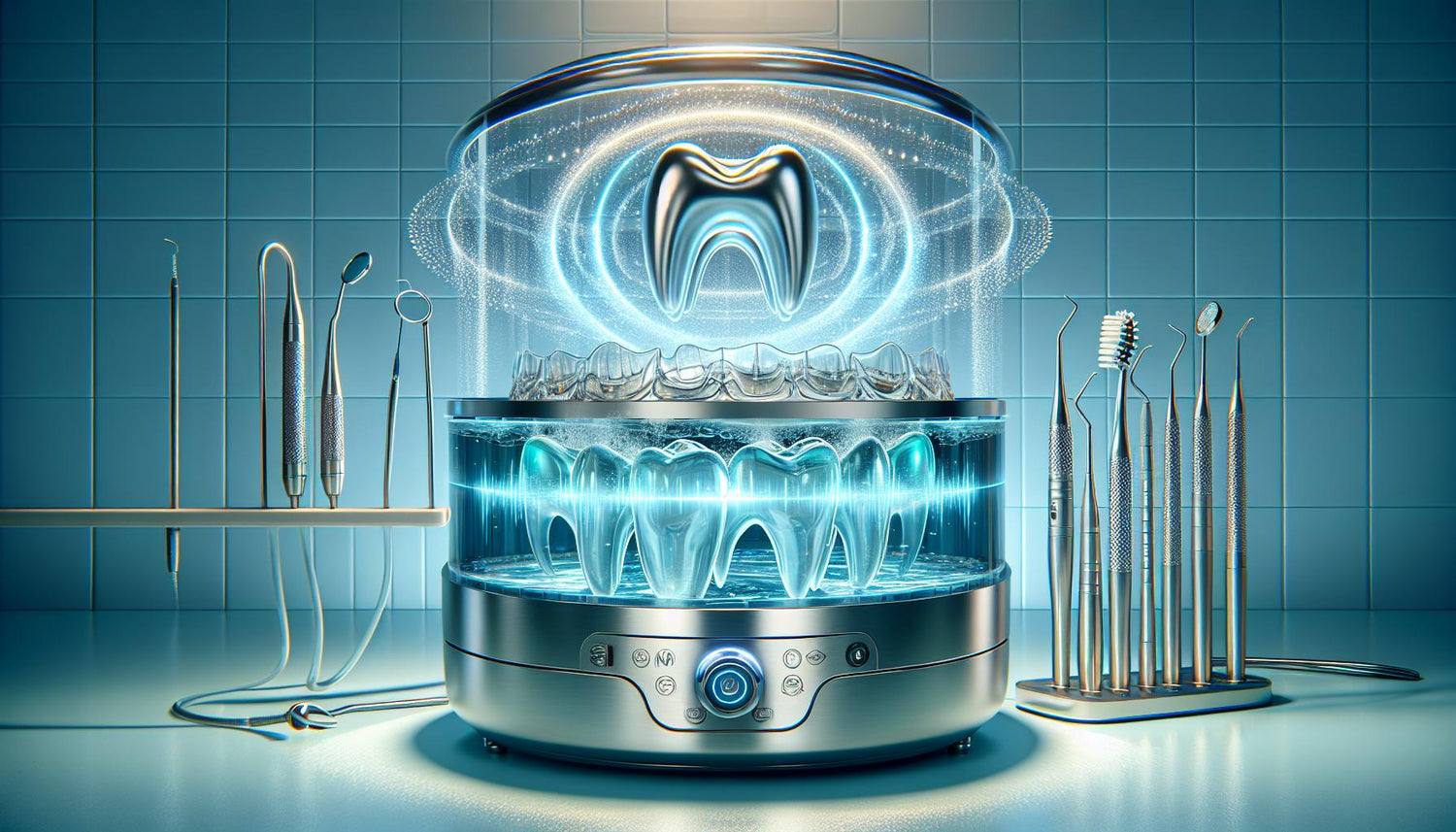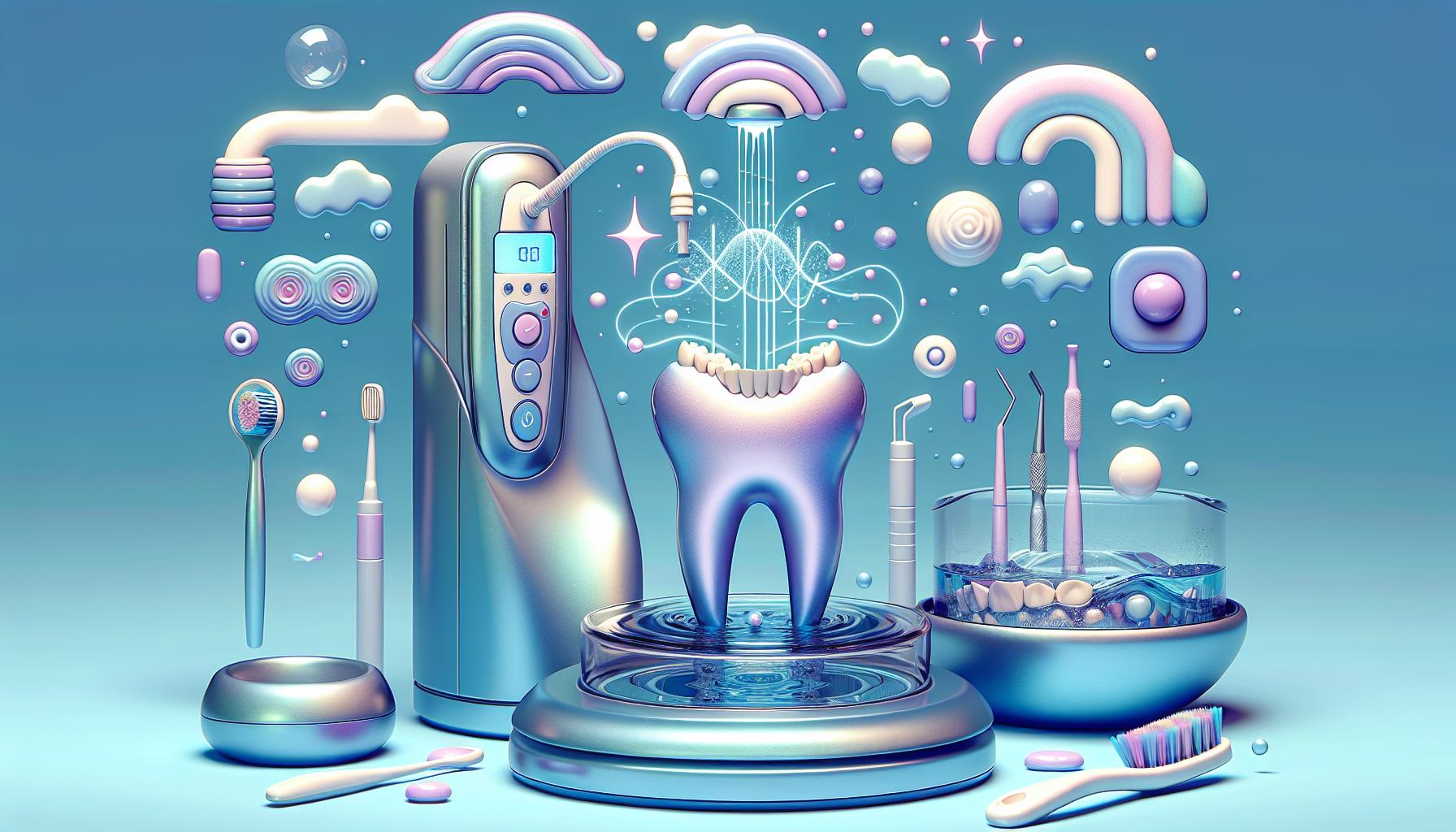Maintaining proper oral hygiene is crucial, especially when it comes to removable dental appliances such as dentures, retainers, and Invisalign devices. Odor issues have long plagued denture wearers, often causing embarrassment and discomfort. Fortunately, modern ultrasonic dental cleaners have emerged as a breakthrough technology, offering an efficient and effective method for cleaning dentures and eliminating bacteria that cause odor. In this article, we explore how ultrasonic technology works to clean dental appliances, the advantages it provides, and why it’s becoming a must-have tool for dental hygiene routines.
Understanding Ultrasonic Cleaning Technology
Ultrasonic cleaning technology employs high‐frequency sound waves to create microscopic bubbles in a cleaning solution. These bubbles implode in microscopic cavitation bursts, dislodging debris, plaque, and bacteria from every nook and cranny of dentures and other dental appliances. Unlike traditional cleaning methods that rely solely on manual scrubbing, ultrasonic cleaners provide deep, agitation‐free cleaning that reaches areas inaccessible to manual brushes.
Ultrasonic dental cleaners have been engineered to tackle tough odor‐causing bacteria that reside in tiny crevices of dentures and retainers. When used as a cleaning tool, they effectively eliminate bacteria that might otherwise lead to denture odor, ensuring a fresher, cleaner appliance every time.
How Ultrasonic Cleaners Remove Odor-Causing Bacteria
Bacteria thrive in the micro crevices of dental appliances, leading to unpleasant smells and potential oral health issues if not properly managed. Ultrasonic dental cleaners work by harnessing sound waves that travel through the cleaning solution and onto the surface of the appliance. The ultrasonic energy generates enough force to disrupt the cell walls of the bacteria and dislodge them from the appliance's surface.
This innovative approach means that even hidden contaminants are effectively removed. For those interested in using an ultrasonic retainer cleaner or an ultra sonic cleaner for retainer, these devices offer a solution that standard manual cleaning simply can’t match. With consistent use, these machines reduce the risk of bacterial buildup that can lead to denture odor and other complications, ensuring that every cleaning session leaves appliances pristine and hygienic.
Benefits of Ultrasonic Denture Cleaning
Comprehensive and Efficient Cleaning
One of the most important advantages of cleaning dentures with an ultrasonic cleaner is its ability to reach intricate details. The ultrasonic retainer cleaner operates by sending waves that cover the entire surface area of the appliance, guaranteeing that even hidden spots are thoroughly cleaned. This reliability positions the ultrasonic retainer cleaner as one of the preferred choices for many dental professionals and individuals alike.
Time-Saving and Low Maintenance
Traditional cleaning methods require significant manual effort and time. In contrast, the best ultrasonic retainer cleaner features automated cleaning processes that drastically cut down on manual labor. Users can simply place their dentures, retainer, or Invisalign aligners into the cleaning device, press a button, and let the machine do the work. This ease of use means that maintaining excellent oral hygiene no longer needs to be a time-consuming chore.
Safe and Gentle on Appliances
Ultrasonic cleaners are designed to be safe for a wide range of dental appliances. The cleaning process is gentle yet effective, ensuring that the appliances are not worn down or damaged over time. For plastic-based dental appliances like Invisalign trays, the ultrasonic invisalign cleaner provides a valuable service by preserving the integrity of the material while delivering a deep clean.
Enhanced Oral Health
Regular use of ultrasonic dental cleaners ensures that harmful bacteria are removed consistently. This contributes directly to improved oral health by reducing risks associated with bacterial infections and bad breath. The effectiveness of devices such as a retainer cleaner machine supports the claim that routine use not only improves appliance hygiene but also reinforces overall oral cleanliness.
Choosing the Right Ultrasonic Cleaning Device
With many options on the market, selecting the best retainer cleaner machine or best ultrasonic retainer cleaner can feel overwhelming. Here are some factors to consider when making your decision:
1. Cleaning Efficacy
When evaluating an ultrasonic dental cleaner, consider its ability to remove bacteria and debris from your appliances. Look for clinical studies or reviews that describe its performance in eliminating odor‐causing bacteria. Devices labeled as ultra sonic cleaner for retainer are typically designed with specialized ultrasonic transducers that focus on deep cleaning.
2. Versatility
A versatile cleaning device can be used on a variety of dental appliances. Whether you require an ultrasonic invisalign cleaner or a retainer cleaner machine, check that the device you’re considering is suitable for all your cleaning needs. The best retainer cleaner machine should accommodate multiple types of appliances without causing damage.
3. Ease of Use
Simplicity in operation is key. The best ultrasonic retainer cleaner devices are designed with user-friendly interfaces and require minimal supervision during operation. This is particularly beneficial for users who prefer hands-off, automated cleaning routines.
4. Safety Features
Look for ultrasonic dental cleaners that offer safety features such as automatic shut-off and temperature control. These features ensure that cleaning is done under optimal conditions to protect the integrity of your dental appliances, whether you are cleaning dentures with an ultrasonic cleaner or using another model.
5. Customer Reviews and Recommendations
Before purchasing, take the time to read customer reviews and recommendations. Feedback from other users can provide valuable insights into the performance, durability, and efficiency of the device. Positive testimonials regarding the ultrasonic retainer cleaner reinforce its efficacy in eliminating denture odor and improving overall hygiene.
How to Use an Ultrasonic Dental Cleaner
Using an ultrasonic dental cleaner is simple and intuitive. Follow these general steps to ensure a thorough cleaning process:
- Prepare the Cleaning Unit: Fill the cleaning chamber with an appropriate cleaning solution as recommended by the manufacturer. This solution is designed to boost the cleaning performance and combat bacteria effectively.
- Place the Appliance: Insert your dentures, retainer, or Invisalign aligners into the cleaning basket. Ensure that the appliance is fully submerged in the cleaning solution to maximize the cleaning effect.
- Start the Cleaning Cycle: Activate the cleaning machine using the control panel. Typical cycles vary between devices, but most run for a few minutes, providing thorough ultrasonic cleaning without manual scrubbing.
- Rinse and Dry: After the cleaning cycle is complete, remove the appliance and rinse it thoroughly under running water. This step will help to remove any residual cleaning solution. Finally, allow your appliance to dry completely before reinsertion.
By incorporating an ultrasonic retainer cleaner or a retainer cleaner machine into your daily routine, you streamline the cleaning process, ensuring that your dental appliances remain fresh and bacteria-free. This modern cleaning method is particularly useful in maintaining a fresh environment for dentures by minimizing odor-causing bacteria.
The Science Behind Ultrasonic Cleaning
The Role of Cavitation
It may seem almost magical that a cleaning device can remove bacteria using sound waves, but the science behind it is robust and proven. When ultrasonic waves pass through the cleaning solution, they produce millions of microscopic bubbles that form and rapidly implode. This implosion yields shock waves that target contaminants with pinpoint accuracy. For patients seeking an ultra sonic cleaner for retainer or cleaning dentures with an ultrasonic cleaner, this process means a comprehensive cleaning that targets every microscopic region of their dental appliance.
Eliminating Biofilm and Bacterial Colonies
Dental appliances often accumulate biofilm—a collective of bacteria and microbial substances—that is remarkably resilient and the primary cause of persistent odors. The ultrasonic mechanism effectively breaks up this biofilm, preventing re-accumulation and ensuring that dental appliances remain fresh. This process is why many consider the best ultrasonic retainer cleaner indispensable, particularly for achieving consistent results that maintain a hygienic standard over time.
Real-World Applications and User Experiences
Many individuals have already turned to ultrasonic dental cleaners as the solution to age-old denture odor problems. Denture wearers who have incorporated cleaning devices into their routine report significant improvements in odor control and overall appliance appearance. Testimonials frequently highlight that cleaning dentures with an ultrasonic cleaner not only provides a cleaner appliance but also boosts confidence throughout the day.
For those using retainers or Invisalign aligners, the integration of an ultrasonic invisalign cleaner into their regimen has been celebrated for its convenience. Users appreciate that with a simple push of a button, their appliances are thoroughly cleaned without the risk of manual errors or missed spots—common issues associated with traditional cleaning methods.
Furthermore, many dental clinics are incorporating retainer cleaner machines into their care procedures. This trend underscores the reliability of these cleaning devices as trusted tools in maintaining not just the aesthetics but also the health of dental appliances. The shift towards professional adoption of these technologies reinforces the belief that ultrasonic dental cleaners offer a long-term solution to persistent hygiene issues.
Comparing Ultrasonic Cleaners with Traditional Cleaning Methods
Traditional cleaning methods for dentures and retainers have primarily involved manual brushing or soaking in disinfectant solutions. Although these methods can be effective to a point, they lack the depth and precision provided by ultrasonic technology. Here’s how they compare:
Manual Cleaning
Benefits: Low-cost, immediate availability.
Limitations: Often leaves behind residual bacteria, missed spots, and inconsistent cleaning results.
Chemical Soaking
Benefits: Can disinfect and reduce bacteria levels.
Limitations: Certain chemicals might degrade the material of dental appliances over time, and the cleaning process still heavily relies on manual rinsing.
Ultrasonic Technology
Benefits: Reaches all areas of the appliance, provides consistent and deep cleaning, and reduces the risk of dents and voids caused by excessive manual handling.
Limitations: Requires an initial investment in the device and periodic maintenance of the cleaning unit.
Tips for Maximizing Your Ultrasonic Cleaner’s Effectiveness
- Ensure your appliance is free of large debris before placing it in the machine.
- Use a cleaning solution recommended by your device manufacturer to optimize the cavitation process.
- Follow the manufacturer’s guidelines for cycle duration to avoid any potential damage to your dentures or retainers.
- Clean the ultrasonic cleaner regularly to maintain its performance and prevent residue buildup.
- Store your appliances in a dry, clean place after cleaning to prevent re-contamination.
Future Trends in Ultrasonic Dental Cleaning
As technology advances, the scope of ultrasonic cleaning in dentistry is expected to grow. Future innovations may include devices with enhanced sensors that monitor the cleanliness of the appliance in real time, or even integrations with smart home systems that remind you when it’s time to clean your retainers or dentures.
Additional research may expand these devices’ capabilities further into the realm of antibacterial treatment, improving the formulation of cleaning solutions and the overall efficiency of the cleaning process. As more studies validate the long-term benefits, devices such as the ultrasonic invisalign cleaner are very likely to become standard in both home and professional dental care settings.
In the broader context of healthcare, ultrasonic cleaning technology could see expanded use beyond dental applications. Its proven efficiency against biofilm and bacteria positions it as a promising candidate for various sterilization and sanitation processes, underscoring its versatility and effectiveness as a cleaning solution.
Conclusion
Ultrasonic dental cleaners represent a major breakthrough in oral hygiene for individuals who rely on removable dental appliances. By harnessing ultrasonic technology to generate powerful cleaning waves, these devices effectively eliminate odor-causing bacteria and provide a deep, thorough clean that surpasses traditional methods. Whether you're searching for an ultrasonic retainer cleaner, an ultra sonic cleaner for retainer, or the best ultrasonic retainer cleaner for your needs, the benefits extend beyond mere convenience.
For denture wearers striving to eliminate persistent odor and maintain optimal hygiene, cleaning dentures with ultrasonic cleaner devices offers a revolutionary solution. With advancements in technology making these devices more user-friendly, efficient, and versatile, there has never been a better time to upgrade your dental care routine. Embracing the future of oral hygiene can help ensure that your dental appliances remain clean, fresh, and free from bacteria—providing both confidence and improved health in the years to come.


